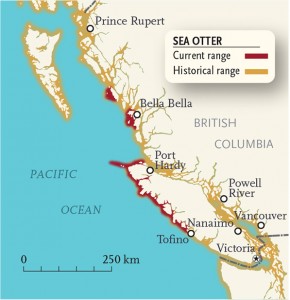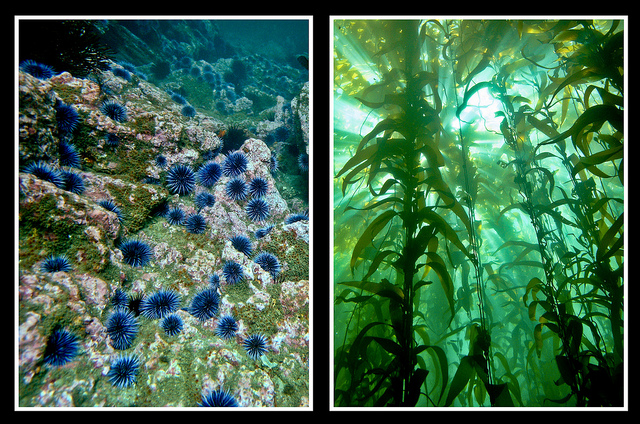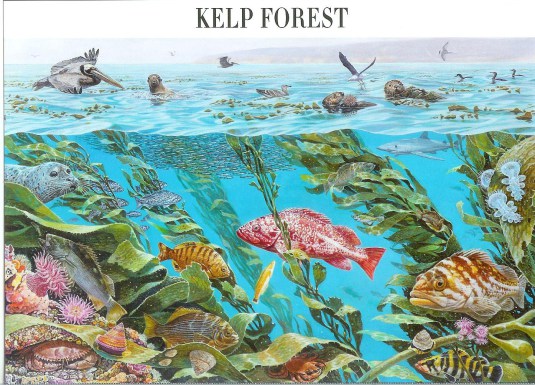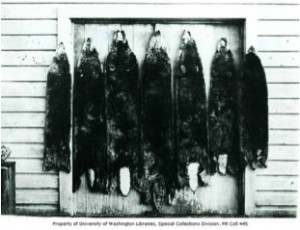The Reintroduction in B.C
Between 1969 and 1972, a total of 89 sea otters were reintroduced to British Columbia from Alaska. Interestingly, the area from which otters were reintroduced happened to be a site for nuclear testing (this event lead to the creation of Greenpeace international). Since the reintroduction the population has steadily been growing and their range has been increasing. Currently there are almost 5,000 sea otters in B.C!
In areas where sea otters have been reintroduced, there have been major environmental changes. For example, in otter habitats there are now less urchins and more kelp. The ecosystem has also returned to a healthy and natural state as was seen in B.C before the sea otters were killed off.
More benefits from kelp include:
- Increased carbon storage
- More tourism from scuba divers in the kelp forests
- Increased nurseries and habitats for many fish and invertebrates
Not everyone has been happy about the sea otter comeback. For example, some First Nation’s groups and fishers who rely on sea otter prey for their food and income are worried that a growing number of sea otters may be threatening their resources.
First Nation groups coexisted with sea otters and shellfish for thousands of years prior to the fur trade. They are concerned with growing sea otter numbers since their own livelihood and culture may be threatened by the declining invertebrate populations. However, there have been positive responses to the reintroduction such as Nuu-chah-nulth First Nation efforts to restore ecosystem balance and protect otters through the Uu-a-thluk program.

A Haida First Nation button blanket of a double-headed eagle: Wool, dentalium shell, abalone shell and pear buttons http://www.historymuseum.ca/cmc/exhibitions/tresors/treasure/232eng.shtml
The fishers blame the sea otters for the collapse of the fisheries because they are in direct competition for the invertebrates. It is unclear if this is the only reason for decline since there has been evidence of certain invertebrate fisheries (like abalone) collapsing in the absence of sea otters.
It appears that sea otters are here to stay and conflicts will need to be resolved through communication and collaboration between groups.




